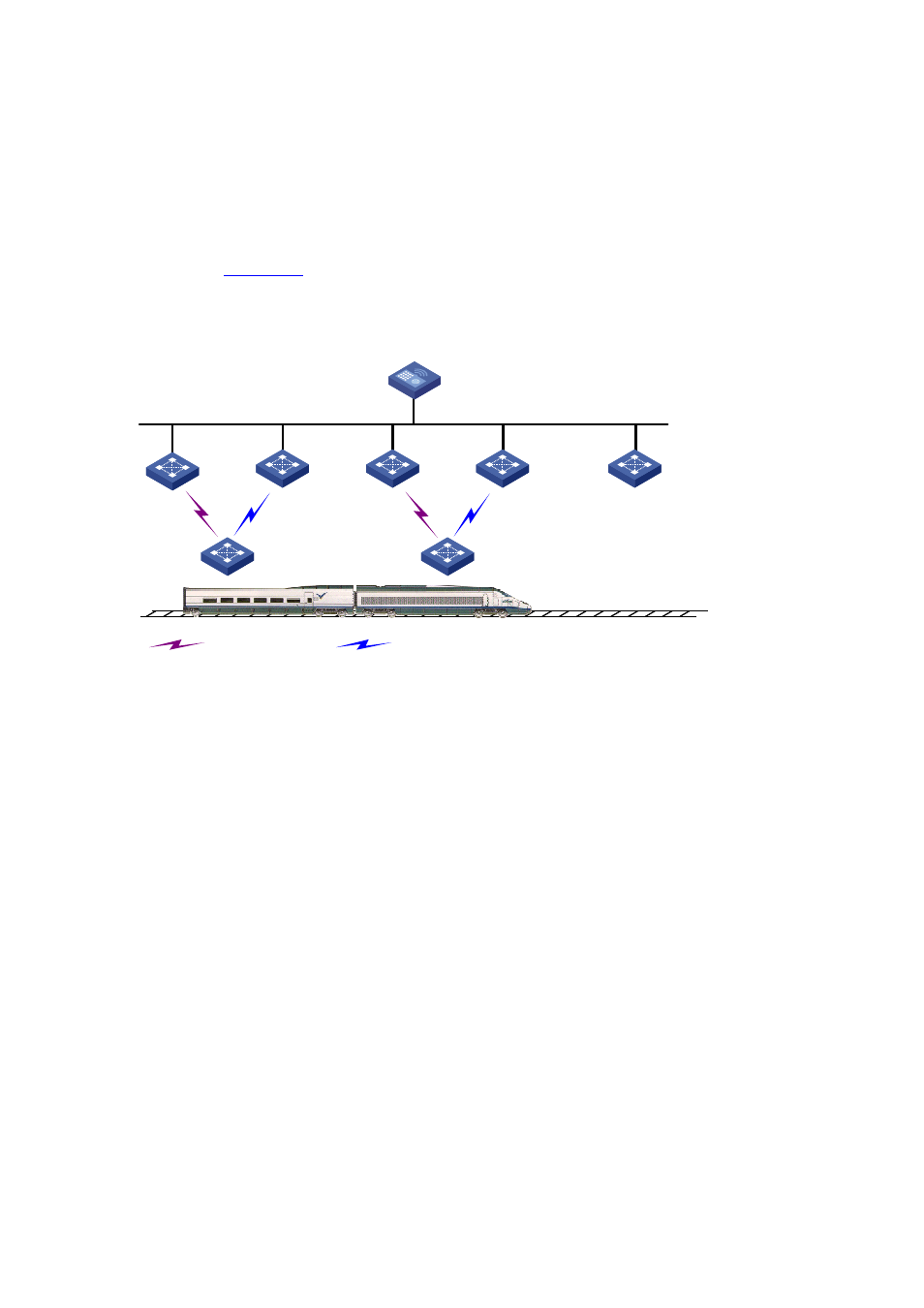Mobile link switch protocol, Mlsp advantages, Operation of mlsp – H3C Technologies H3C WX6000 Series Access Controllers User Manual
Page 315

32-6
part of WLAN mesh networks. Security involves encryption algorithms and distribution and
management of keys. Currently, PSK + CCMP combination is used for securing mesh networks.
Mobile Link Switch Protocol
At any given time, an active link should be available between a rail MP and a train MP for data
communication. MLSP was developed to create and break links during train movement.
As shown in
, when the train is moving, it needs to break the existing active link with rail MP
2 and create a new active link with another rail MP.
Figure 32-7 Diagram for MLSP
Rail MP 1
Rail MP 2
Rail MP 3
Rail MP 4
Rail MP n
...
Train MP 1
Train MP 2
...
AC
Active link
Dormant link
Active Link: Logical link through which all data communication from/to a train MP happens.
Dormant Link: Logical link over which no data transfer happens, but it satisfies all the criteria for
becoming an active link.
MLSP advantages
1) MLSP ensures that the link switch time is less than 30 ms.
2) MLSP works well even if the devices get saturated at high power level.
3) MLSP achieves zero packet loss during link switch.
Operation of MLSP
MLSP establishes multiple links at any given time between a train MP and multiple rail MPs to provide
link redundancy, thus ensuring high performance and good robustness for the network.
The following four parameters are considered by MLSP for link switch. Based on the deployment, all
these parameters are tunable to achieve best results.
Link formation RSSI/link hold RSSI: This is the minimum RSSI to allow a link to be formed and held.
Therefore, the minimum RSSI must be ensured at any given point in the tunnel. Otherwise, the
error rate can be very high.
Link switch margin: If the RSSI of the new link is greater than that of the current active link by the
link switch margin, active link switch will happen. This mechanism is used to avoid frequent link
switch.
Link hold time: An active link remains up within the link hold time, even if the link switch margin is
reached. This mechanism is used to avoid frequent link switch.
